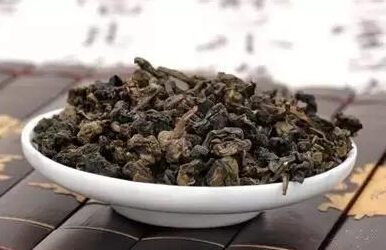Recently, many people have been asking me about the best type of Tieguanyin, what traditional Tieguanyin is, and which tea is made using traditional methods. The rich-flavored Tieguanyin has become quite popular—what are its benefits?
So, we’ve carefully prepared this issue, hoping you’ll enjoy it!

Traditional semi-fermented Anxi Tieguanyin tea, well-known among seasoned tea drinkers, has a heavier taste that might not appeal to new enthusiasts at first. The roasted tea leaves are darker in color, appearing yellow or black, but their flavor is exceptionally pure, with a deep golden tea soup representing the rich-flavored type. Carefully processed Tieguanyin must adhere to traditional semi-fermentation standards.
Tieguanyin is divided into light and rich flavors, with the latter further categorized by roasting intensity (light, medium, or strong fire) and materials used (charcoal or conventional roasting). The roasting process is crucial, as the saying goes: 'Tea is the king, fire the minister.'
Refined oolong tea Tieguanyin earthen kiln roasting method
The quality of the charcoal used for firing the kiln (starting the kiln) and repairing it is essential for successful roasting. Only pure charcoal should be used in the kiln. Charcoal ends, bamboo scraps, cigarette butts, and other impurities can produce smoke and off-flavors during burning, causing uneven heat distribution and cracks in the kiln’s ash layer. Charcoal with too much sand or soil not only leads to uneven heat but may also cause the kiln to collapse. Additionally, before filling the kiln, it’s best to break the charcoal into small, uniform pieces to ensure even packing and stable, long-lasting heat during roasting.
Tea is the king, fire the minister. Rich-flavored Tieguanyin is slowly roasted over charcoal at low heat. The formation of high-quality Tieguanyin requires three days and nights (72 hours) of roasting, with a minimum of 12 hours typically needed.
While rich-flavored Tieguanyin may not match the fresh taste of light-flavored Tieguanyin, its aroma, depth, and flavor are more pronounced. This is reflected in:
1. Deeper complexity: The traditional tea-making process involves more thorough fermentation, enhancing Tieguanyin’s unique depth.
2. Richer aroma: It contains over 100 aromatic compounds, more than light-flavored Tieguanyin, with a stronger, more layered fragrance—natural floral notes complemented by chestnut, depth, and sweetness.
3. Fuller taste: Roasting transforms catechins, making the flavor mellower and richer. The caramelization of polysaccharides into monosaccharides adds a chestnut-like sweetness. Additionally, roasted tea has a warming quality, better suited to the body’s needs.